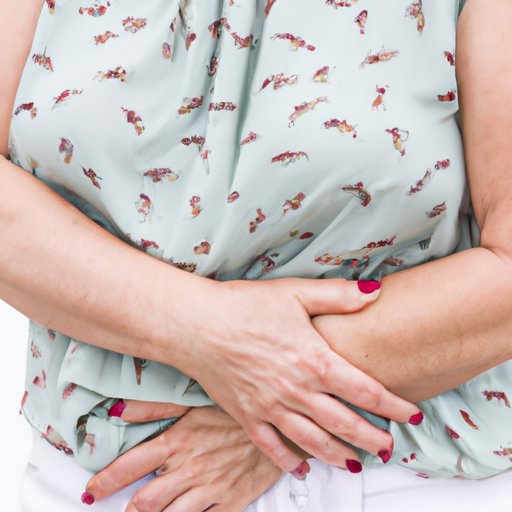
I. Introduction
Jock itch is an uncomfortable and often embarrassing condition that affects many people, especially athletes and those with active lifestyles. It can cause itching, redness, and a rash in the groin area, which can make it difficult to engage in physical activity or even carry out everyday tasks. In this article, we will explore the various prevention and treatment options available for those struggling with jock itch.
II. Prevention is Key
Preventing jock itch is the best way to avoid the discomfort and frustration it can cause. Here are some key steps you can take to prevent jock itch:
A. Keeping the groin area dry
A moist environment is the perfect breeding ground for the fungi that cause jock itch. To prevent this, keep the groin area as dry as possible after showering or sweating. Use a clean towel to pat the area dry, and change into clean, dry clothes as soon as possible.
B. Avoiding tight-fitting clothing
Tight-fitting clothing can cause irritation and increase the likelihood of jock itch. Opt for loose-fitting, breathable clothing, especially when engaging in physical activity.
C. Using antifungal powders
Antifungal powders can help prevent jock itch by keeping the groin area dry and protecting the skin from fungi. Look for powders that contain miconazole or clotrimazole, which are effective antifungal agents.
III. Understanding the Root Causes
Understanding the root causes of jock itch can help in its prevention and treatment. Here are the key causes of the condition:
A. Fungal Infection
Most cases of jock itch are caused by a fungal infection, often the same type of fungus that causes athlete’s foot. This fungus thrives in warm, moist environments, making the groin area an ideal location for it to grow.
B. Lifestyle Changes
Certain lifestyle changes can increase the risk of developing jock itch, including wearing tight-fitting clothing, exercising in non-breathable clothing, and frequenting communal areas like saunas and locker rooms.
C. Over-the-counter Treatments
Certain over-the-counter medications, such as antibiotics and steroids, can increase the risk of developing jock itch by altering the natural balance of bacteria and fungi on the skin.
IV. Natural Remedies
Many people prefer natural remedies for treating jock itch, as they can be gentler on the skin and less harsh than medications. Here are some effective natural remedies for jock itch:
A. Tea Tree Oil
Tea tree oil has antifungal properties that can help treat jock itch. Mix a few drops of tea tree oil with a carrier oil, such as coconut oil, and apply to the affected area twice daily.
B. Apple Cider Vinegar
Apple cider vinegar has natural antifungal properties that can help alleviate symptoms of jock itch. Mix equal parts of apple cider vinegar and water, and apply the solution to the affected area with a cotton ball three times per day.
C. Aloe Vera
Aloe vera has soothing and healing properties that can help ease the discomfort of jock itch. Apply aloe vera gel to the affected area twice daily for best results.
V. Medication Options
If natural remedies are not effective, medication may be necessary to treat jock itch. Here are the most common medication options for jock itch:
A. Topical Creams
Antifungal creams, such as clotrimazole or miconazole, can effectively treat jock itch. Apply the cream to the affected area twice daily for 2-4 weeks.
B. Oral Medications
Oral antifungal medications, such as fluconazole or terbinafine, may be necessary for severe or recurring cases of jock itch. These medications can have side effects, so it is important to discuss them with a healthcare provider before taking them.
C. Pros and Cons of Each
Topical creams are effective for mild to moderate cases of jock itch, while oral medications are reserved for more severe cases. Topical creams are easier to use and have fewer side effects, while oral medications can cause side effects and require a prescription. Consult with a doctor to determine the best course of treatment for your individual case.
VI. Myth-busting
There are many myths surrounding jock itch that can make it difficult to treat. Here are some common myths debunked:
A. Common Myths Debunked
Myth: Jock itch only affects men.
Fact: Jock itch can affect anyone, regardless of gender.
Myth: Jock itch is caused by poor hygiene.
Fact: Jock itch is caused by a fungal infection and is not necessarily related to hygiene.
Myth: Jock itch is only caused by exercise.
Fact: Jock itch can be caused by a variety of factors and is not necessarily related to exercise.
B. Easing the Itch
While treatment is essential for jock itch, there are also steps you can take to ease the itch and discomfort that can come with the condition. Applying a cold compress, taking an oatmeal bath, and avoiding scratching the affected area are all effective ways to ease the itch.
VII. Conclusion
Jock itch can be a frustrating and uncomfortable condition, but effective prevention and treatment options are available. Understanding the root causes of jock itch, utilizing natural remedies, and considering medication options can all help alleviate symptoms and prevent reoccurrences. If you are struggling with jock itch, do not be afraid to seek help from a healthcare professional.
Summary: Jock itch can cause discomfort and embarrassment for those who struggle with it. Effective prevention and treatment options include keeping the groin area dry, avoiding tight-fitting clothing, utilizing antifungal powders, and considering natural remedies or medication. It is important to understand the root causes of jock itch and recognize common myths surrounding the condition. Seeking help from a healthcare professional can also be an essential step in finding relief.





